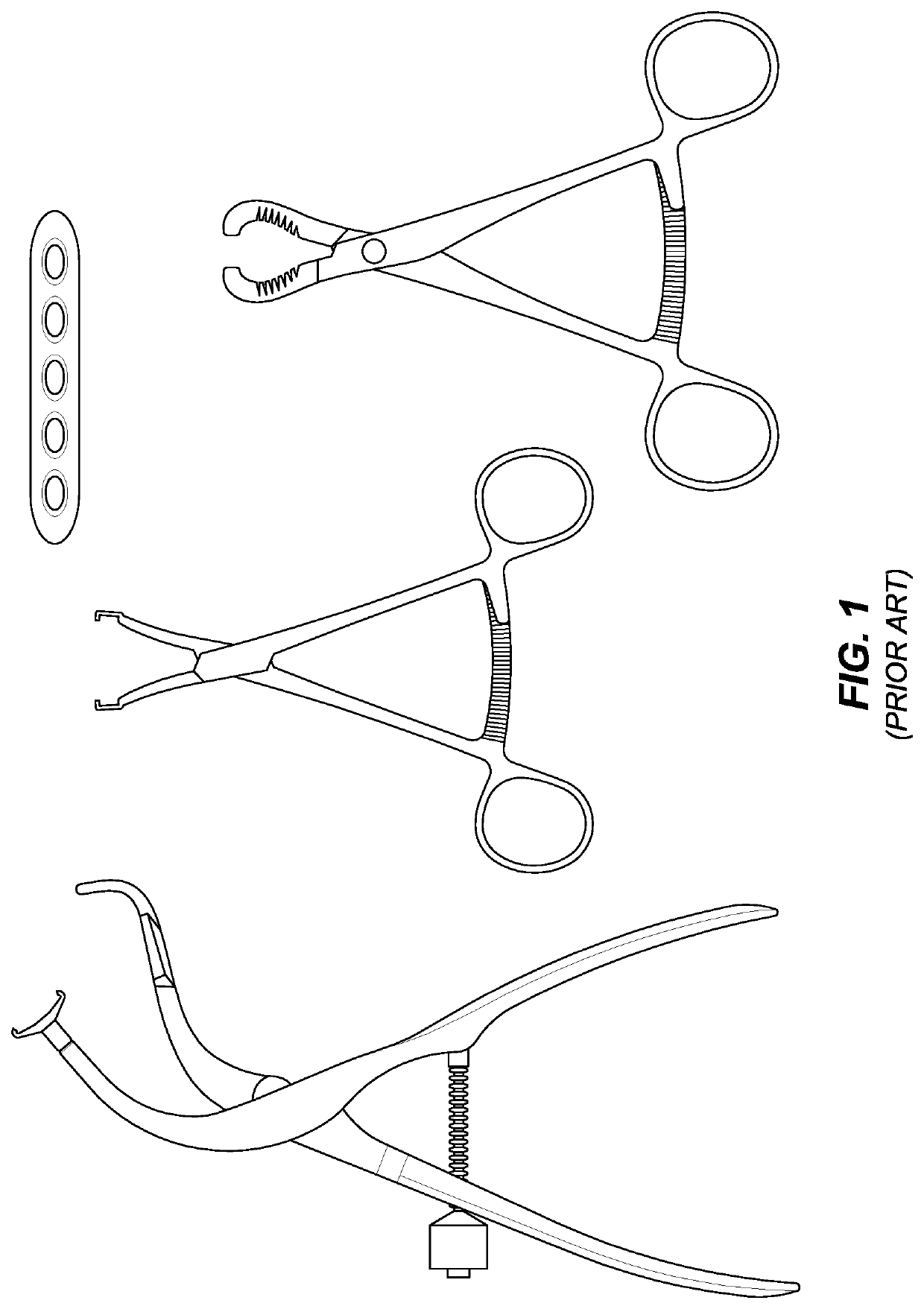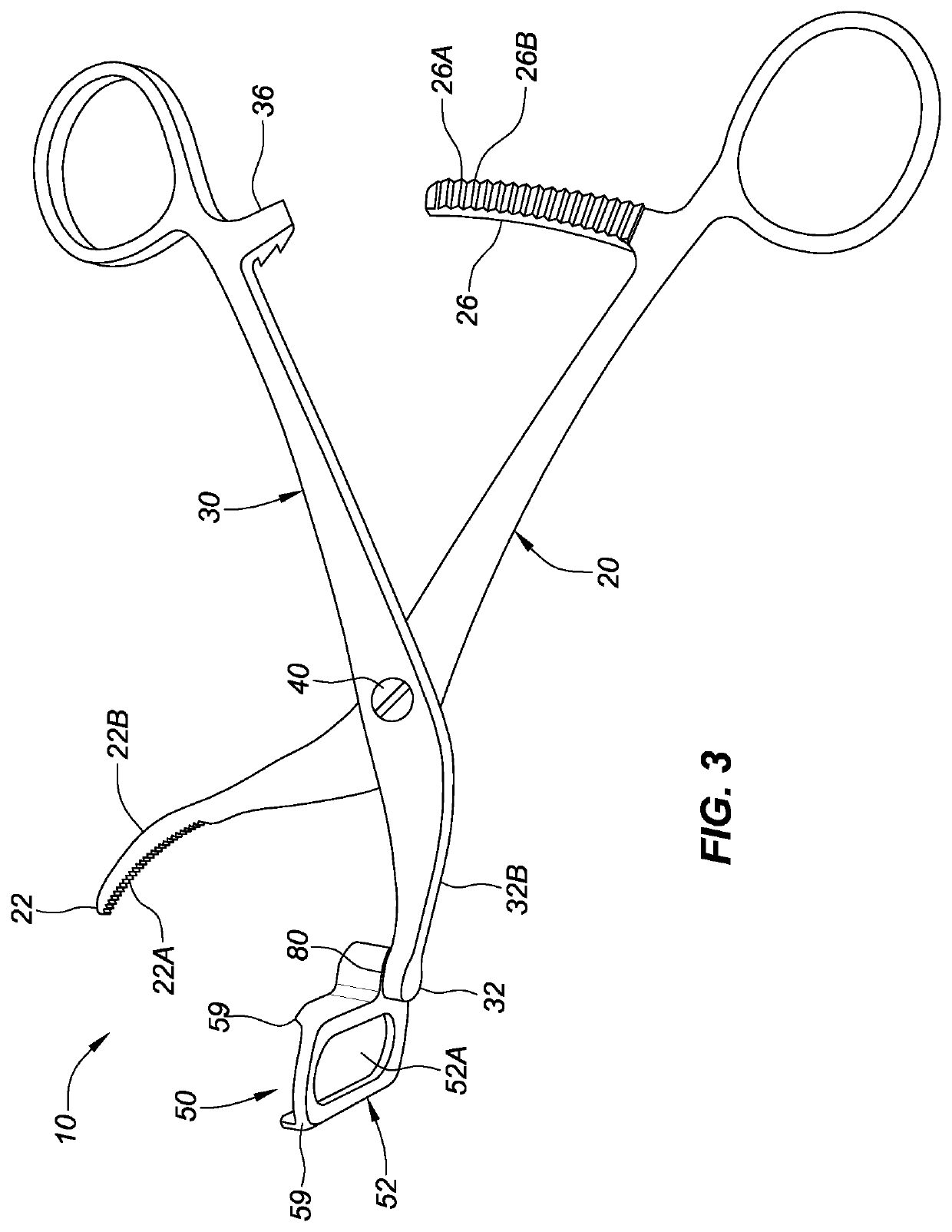Modular orthopedic clamps
a technology of orthopedic clamps and modules, applied in the field of modules for orthopedic clamps, can solve the problems of affecting the operation of the surgical forceps, etc., and achieve the effect of reducing fractures and ensuring accuracy and reducing fractures
- Summary
- Abstract
- Description
- Claims
- Application Information
AI Technical Summary
Benefits of technology
Problems solved by technology
Method used
Image
Examples
Embodiment Construction
[0051]The current invention is now described with reference to the figures. FIG. 1 shows several existing types of clamps, as well as an existing internal fixation plate. Generally, the existing clamps may be used to reduce the fracture, and maintain the reduction, but at least one of the tongs will be in the way of installing the plate. Accordingly, these existing clamps must typically be removed in order to install the plate.
[0052]As noted above, this requires the surgeon to maintain the reduction by hand while also positioning the plate and holding the plate in place while installing the screws or other attachment means used to fix the plate before the patient is closed. This is a suboptimal process because the integrity of the reduction or the alignment of the broken bone ends or other bone pieces may be lost or reduced. This is also a suboptimal process because it is inefficient and may increase surgery time and the time that the patient is under anesthesia.
[0053]Referring to F...
PUM
 Login to View More
Login to View More Abstract
Description
Claims
Application Information
 Login to View More
Login to View More - R&D
- Intellectual Property
- Life Sciences
- Materials
- Tech Scout
- Unparalleled Data Quality
- Higher Quality Content
- 60% Fewer Hallucinations
Browse by: Latest US Patents, China's latest patents, Technical Efficacy Thesaurus, Application Domain, Technology Topic, Popular Technical Reports.
© 2025 PatSnap. All rights reserved.Legal|Privacy policy|Modern Slavery Act Transparency Statement|Sitemap|About US| Contact US: help@patsnap.com



